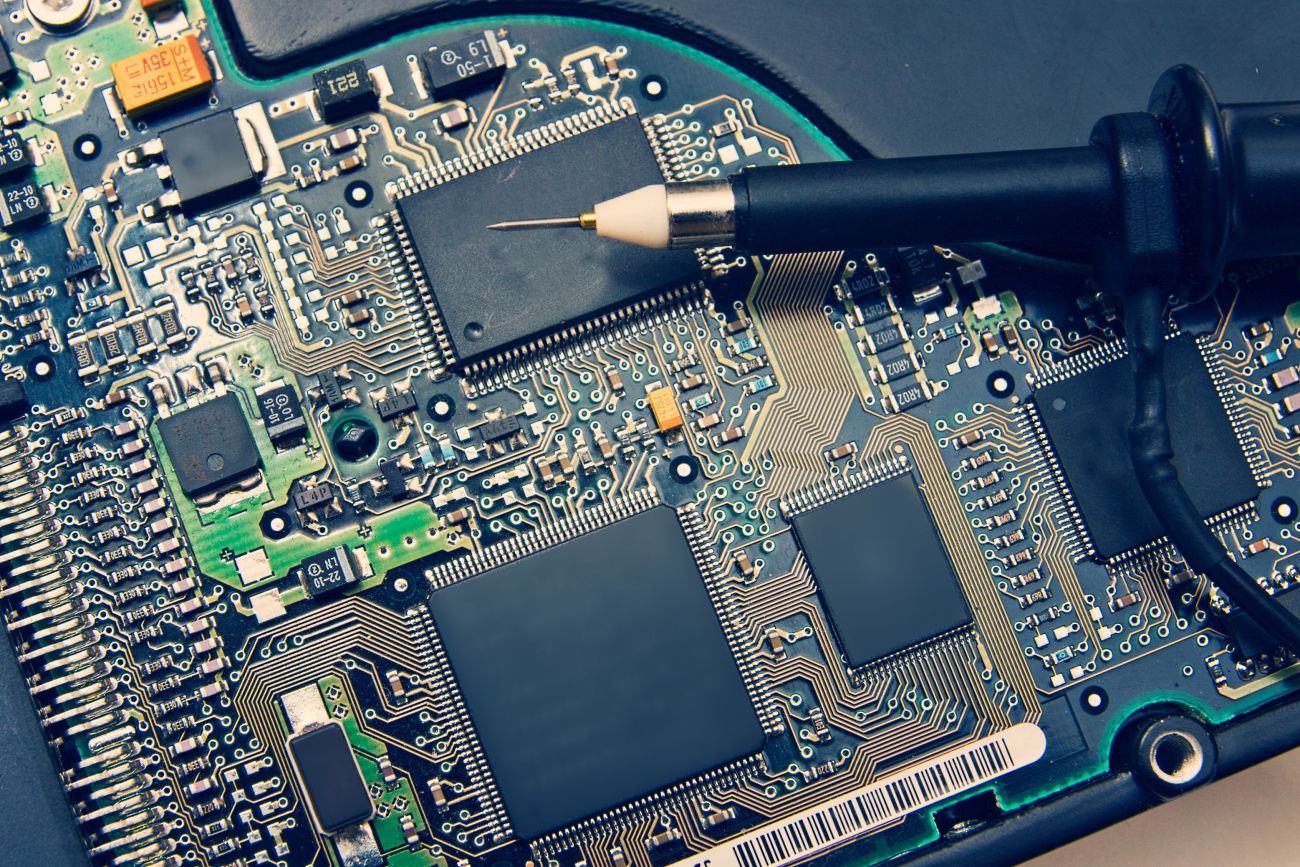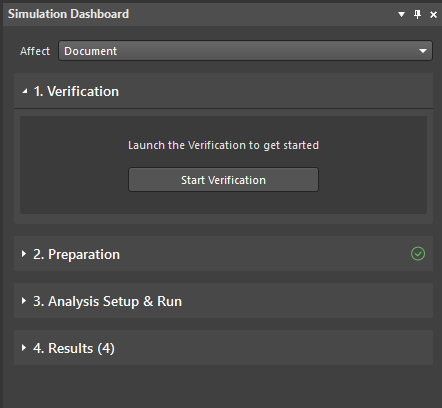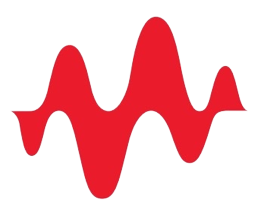Real-World Analysis of Oscilloscope Probes

Oscilloscope probes are an essential part of your lab setup if you have an oscilloscope, but have you ever stopped to consider just how the probes could be affecting the signal you're carefully studying to understand the behavior of your circuit or analysis the performance of a component?
This article will look at different oscilloscope probes, compare performance, see how probes affect what you see, and determine which probes are best for your application. To obtain comprehensive results, I supplemented my high-quality probes with some of the cheapest probes available on Amazon and Digi-Key to see the differences.

When looking at the different available options, the expectation was that the cheap probes would all be bad and the expensive probes would generally be better. However, the results may well come as a surprise.
Oscilloscope Probe Analysis
The analysis of oscilloscope probe performance aimed to discover more about different probe types and understand how they impact measurements using a range of probes in real-world scenarios.
Probe performance is particularly critical when looking at high-speed signals, a poor-quality probe will not only fail to display an accurate waveform, but its capacitive and inductive properties can affect the operation of the circuit you're trying to monitor. It's, therefore, vital you understand what probe you're using and how it will affect the signals you're trying to measure.
The issues with probe differences can be particularly troublesome in larger labs where you may have access to many different types of probes. Measurements recorded when testing a circuit will probably be different if you go back and remeasure using other probes. This is one of the reasons you need to have complete records of what test equipment you use, including which probes and leads for formal verification and validation testing.
The oscilloscope probes tested were the following:
- Rigol PVP2150 150MHz probe
- Rigol PVP2350 350MHz probe
- Keysight N2140A 200MHz probe
- Keysight N2889A 350MHz probe
- Keysight N2894A 700MHz probe
- Pico Technology TA375 100MHz Probe
- Digilent P6100 460-004 100MHz Probe
- Youmile P6100 100MHz Probe
- YPioneer high-voltage P4200 100MHz probe

Oscilloscope Probes Explained
An ideal oscilloscope probe will duplicate the signal it measures on the circuit board with absolute fidelity at the oscilloscope without loading the circuit or allowing noise to degrade the signal. The reality is that there will always be some element of signal distortion, loading, and noise. The typical tradeoffs are minimizing the adverse effects on both the circuit board and the measured signal within budget constraints.
There are two main types of probes, passive and active. As the name suggests, passive probes use passive components to attenuate the signal so the maximum potential difference of the measured signal is within the oscilloscope's limits. In its simplest form, a passive probe with no attenuation is effectively a length of wire. Active probes use an active circuit, typically operational amplifier based, to minimize input impedance and improve sensitivity. The ideal probe has a high input impedance and low input capacitance.
Typically probes use screened coaxial cables to minimize noise which adds to the inductive and capacitive properties of passive probes. Usually, probes include a compensation circuit that allows manual adjustment of the impedance parameters to minimize the effect on the circuit that the probe is attached to. Of course, this impedance will vary with frequency, so it's always essential to tune the compensation to the frequency of the measured signal. We can also see that the cable length between the probe head and the oscilloscope connector will affect measurements, particularly bandwidth. This impact is why probe leads are long enough to be useful but no longer than necessary.
Specialist oscilloscope probes are also available for applications such as high-voltage measurements you do not usually find in general electronic circuit boards. These will include safety features to protect the user from the risk of electric shock.
When choosing an oscilloscope probe, there are several important factors to consider.
- Bandwidth defines the effective maximum frequency the probe can accurately measure, specified using the -3dB point of the signal. Signals that significantly exceed this frequency will, at best, be attenuated and lost and, at worst, extremely distorted, giving misleading measurements.
- Rise time defines the fastest transient signal change the probe can accurately measure, basically the steepness of the slope of a fast-changing signal.
The oscilloscope and probe will limit the maximum frequency and rise time you can accurately measure, which can become a seriously restrictive factor when looking at digital clock signals where an accurate rise time depends on precise measurement of the high-frequency signal components of the square wave signal.
The maximum measurable potential difference the probe can accurately measure is the dynamic range. This is generally specified for direct current signal components and will typically reduce as signal frequency increases. Differential measurement probes are available, specifying both common mode and differential mode values of dynamic range. Probes designed to measure power supplies are also available, tuned to measure the small alternating signal imposed on a significant direct current signal.
Oscilloscope Probes Test Approach
The testing process used bode plot-based frequency response analysis on the various probes available across a broad frequency band. The oscilloscopes employed for probe testing have an internal capability for this type of testing but are limited to a maximum of 50MHz. To produce a comparison across a broader and more representative bandwidth, a Siglent SDG7102A Arbitrary Waveform Generator was programmed to step through frequencies of 700kHz to 700MHz. The oscilloscope used for probe testing constrained this testing bandwidth. The Waveform Generator also enabled testing of rise time response, capable of generating signals with a rising edge with a rate of 500 picoseconds.
The testing focus was primarily on the typical use case of probing signals with high-speed elements rather than simply measuring high-speed sine waves. This test method represents the typical use of oscilloscope probes, giving more valuable results to circuit designers. We will see that the frequency response analysis provided some fascinating insights.
One critical aspect of testing was ensuring the correct compensation of the probes so that the results could be cross-correlated and compared to produce a qualitative performance assessment.
Oscilloscope Probes Test Findings
You can best view the testing results on the accompanying video for this article, where you can observe the waveforms produced by each probe and see the differences and, in some cases, the lack of difference in results.

For example, testing two Rigol probes with specified bandwidths of 150MHz and 350MHz produced a near identical frequency response, including waveform shape and the sustained overshoot.

These results suggest that they were functionally identical and just labeled differently. This result correlates with anecdotal evidence from users of these probes.
One of the key findings was the bandwidth results, with some probes demonstrating a -3dB point that far exceeded the specification value. For example, the Rigol probes both captured signals with a rising edge of approximately 750 picoseconds, corresponding to a bandwidth of about 460MHz. This exceeds their specified bandwidths of 150MHz and 350MHz. Interestingly, the Keysight N2140A 200MHz probe also had an observed bandwidth of about 460MHz.
Rigol Results Summary
The Rigol PVP2150 150MHz probe and the Rigol PVP2350 350MHz probe produced almost identical measured waveforms.

Rigol PVP2150

Rigol PVP2350
Keysight Results Summary
The budget-friendly Keysight N2140A comes as two probe packs with spot-on factory compensation and exceptional fast edge test measurement results. The measured waveform correlated greatly with the source test signal, giving excellent measurement accuracy.

Observations of the higher-rated Keysight N2889A 350MHz probe showed it produced a more representative measured waveform compared to the signal waveform than the cheaper Rigol models. This probe produced an exceptional waveform representation of edge rate across a bandwidth of approximately 460MHz. However, given its cost is more than five times the low-cost Rigol option, the results were not significantly better. One point to note is that this probe's input capacitance is higher than the lower bandwidth Keysight probe test, which is essential when probing signals at points on a circuit board that are sensitive to a capacitive load.

The top-rated Keysight N2894A 700MHz is priced around ten times higher than the budget probe but with about half the input capacitance. Testing results noted that the measured speed of the rising edge equates to a bandwidth of only around 520MHz. However, this value exceeds the oscilloscope's bandwidth for a high-impedance input, so while this probe doesn't represent the waveform as well as the 200MHz probe, the oscilloscope's front-end bandwidth limitation might be the cause. On paper, the 700MHz Keysight probe should be the best option, and it may be in the real world following the resolution of test and probe calibration limitations.

This limitation is crucial when measuring signals with components faster than your oscilloscope's bandwidth. The test oscilloscope's 50-Ohm input had a 6.3GHz bandwidth, far exceeding the capability of the function generator signal used to create the test waveform.. The budget-friendly N2140A probe generally produced a cleaner waveform than the higher-rated N2894A model.

Pico Technology Results Summary
The Pico Technology TA375 probe for the PicoTest USB oscilloscope range has a relatively low bandwidth and produces one of the least representative waveforms.

The testing showed that the rising edge response is relatively fast but includes a substantial 35% overshoot. Reducing the test signal rise time to around two nanoseconds controlled the overshoot to an acceptable level and produced a relatively clean measured signal when down to three nanoseconds.

In conclusion, this low-budget probe is excellent for low-frequency work with its typical pairing with a 20MHz oscilloscope.
Digilent Results Summary
Firmly in the budget category is the Digilent 460-004, labeled "P6100", which we'll see is the same model number as the Youmile probe we'll look at later.

This 100MHz bandwidth probe also showed a 35% overshoot when measuring a 100MHz square wave. However, this poor performance was limited to rising edge response, and the rest of the measured waveform was reasonably representative of the test signal.

Reducing the rising edge to below 2.5 nanoseconds, representing a 155MHz bandwidth, dropped the overshoot to below 5%, which is still well above the advertised specification. These low-cost probes may be excellent when using an oscilloscope with minimal bandwidth, such as Analog Discovery or other Digilent USB oscilloscopes.
Youmile Results Summary
The first impression of the Youmile P6100 probe is that it is visually identical to the Digilent 460-004 probe with the same specified bandwidth and is only slightly more expensive. However, testing showed that compared to the Digilent probe, the frequency response drops sharply due to inadequate factory calibration.

An attempt to calibrate the probe ended with the trim control at the end of its travel, and poor manufacturing meant the plastic trim tool was damaged, needing a metal trim tool to adjust.

After calibration, the test results for the Youmile probe were not promising. When tested using a 100MHz square wave, the measured signal bore little resemblance making it unusable as a measurement tool. Even reducing the frequency to well within the specified bandwidth of the probe failed to generate a measured waveform sufficiently representative of the test signal to be usable.

The Digilent probe overall produced far superior results compared to the Youmile equivalent despite the initial identical appearance.
YPioneer High-Voltage Results Summary
The high-voltage YPioneer P4200 is the only 100:1 probe included in this series of tests to observe performance against the standard probes. I only performed comparative testing against the other probes; I didn't include high-voltage tests for safety reasons.

Overall, the budget high-voltage probe produced reasonably representative waveforms within its 100MHz specified bandwidth and exceeded expectations when measuring a 500-picosecond rising edge. The performance dropped off at around 1.5-nanosecond rise times, but this equates to twice the rated bandwidth for the probe.

Keysight Test Findings
I used the Keysight MXR oscilloscope, a potent piece of lab equipment, for all testing. One highlight was the excellent probe calibration capability.

Before Scope-Probe Calibration

After Scope-Probe Calibration
Overall, the results of the probe testing demonstrated that Keysight's second-cheapest N2889A 200MHz probe outperformed all the other passive probes by an enormous margin. While the frequency response analysis was not the best, it did produce a measured waveform that most closely matched the source test signal, which ultimately is what you want from your probe.

It's critical to remember that connecting a probe to a circuit can alter the circuit's behavior thanks to the probe's impedance. Using a probe to tune a circuit accurately can come undone if the circuit behavior changes as soon as you disconnect the probe. The capacitive and inductive properties of the probe can also distort or attenuate signals on a board, degrading performance while you try to diagnose issues.
The takeaway from this testing emphasizes that probe bandwidth isn't the be-all and end-all for selecting the best probe. Bandwidth provides an excellent starting point, but it's only one of many factors to consider. Understanding your probe's behavior is critical to ensuring you correctly interpret the results when measuring signals.
Conclusion
Overall results showed that a relatively cheap, brand-name 200MHz probe could outperform all others in the series of tests. The Keysight N2140A only costs about three times as much as the worst-performing budget probes but delivers more than three times the performance. Consequently, cheap probes represent a false economy as they prevent you from making accurate measurements which is the purpose of using an oscilloscope. Another consideration is that with major brand-name probes like Keysight, Tektronix, or Rohde and Schwarz, you can have reasonable confidence in quality control and consistency between probes.
Finally, your probing technique can substantially influence signal measurements when testing a board. All the probe tests used the same technique, which cancels out any effect in comparative testing, but when it comes to using an oscilloscope in anger, it always pays to ensure you follow the best probing practices to get the best results.


















